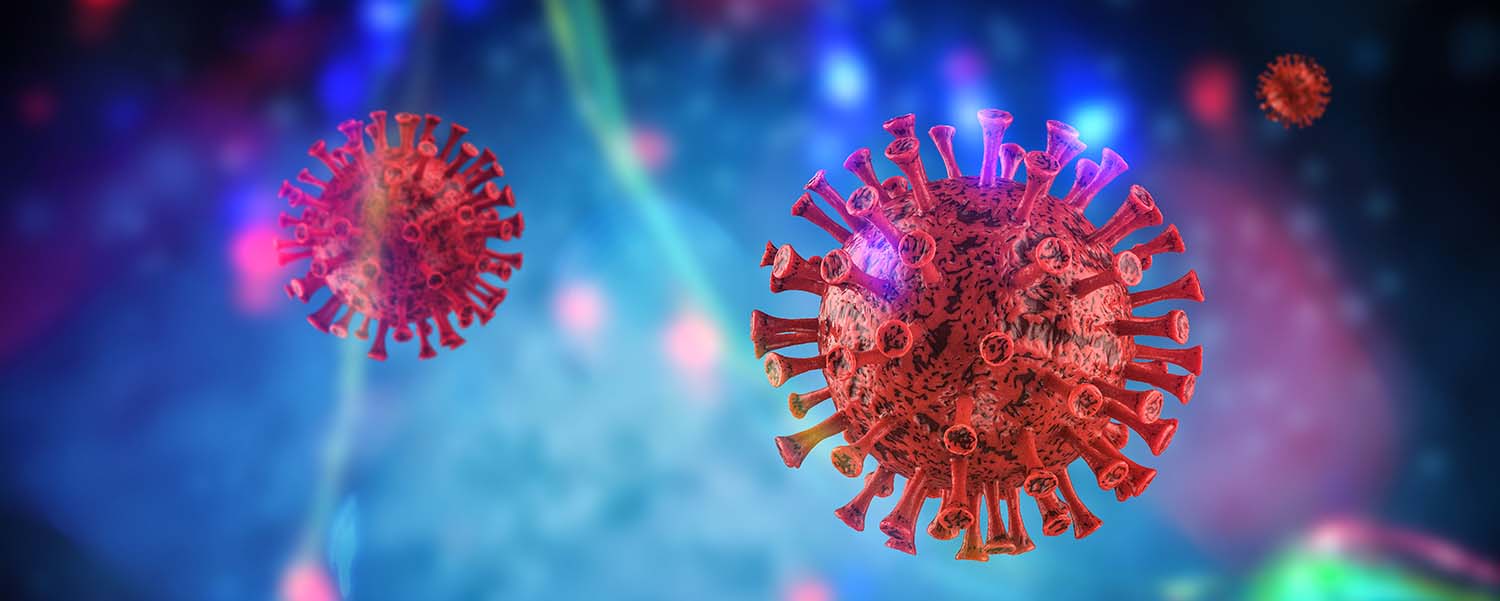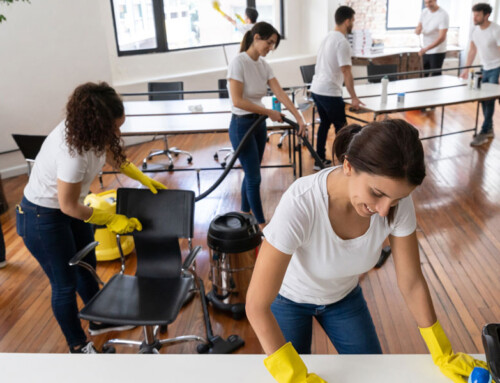Killing Germs…

Microbiological (germs) and epidemiological evidence (disease detectives) show that contaminated surfaces can contribute to the transmission of infectious disease-causing germs and allergens (bacteria, virus, fungi).
Hospital studies show that staff and new patients have been infected if a prior room occupant had methicillin-resistant Staphylococcus aureus (MRSA), vancomycin-resistant enterococci (VRE), Clostridium difficile (C. diff), Acinetobacter baumannii, or other pathogens. An effective way to overcome or minimize the spread of disease is to inactivate and reduce the number of germs in the environment.
It has been shown that improved surface cleaning and disinfection can reduce infections. Studies provide critical information, not just for hospitals, but also for other indoor spaces on improving air quality and decreasing risk on high-touch surfaces in such places as hotels, restaurants, airports, convention centers, schools, and public restrooms.
Manual processes for cleaning and disinfection are frequently suboptimal, suggesting that automated disinfection processes might offer an opportunity to improve cleaning efficacy and consistency.
Using ultraviolet-C (UV-C) light against microorganisms is not a new idea. But the COVID-19 pandemic has increased the development and deployment of UV-C light and violet-blue light disinfection technologies. These are often available as commercial systems and are used in many facilities.
ISSA receives many questions about the use of these lamps for disinfection, illustrating that education and training should be provided on these technologies to incorporate them into existing cleaning processes.
The Global Biorisk Advisory Council®, your GBAC team at ISSA, the worldwide cleaning industry association, offers guidance on the adoption and implementation of technologies by ensuring that efficacy, as well as logistical and safety issues, are established in real-world indoor spaces.
What are a wavelength and a nanometer?
Light spectrum is the many different wavelengths of energy created by a light source. Light can be measured in many units.
Wavelengths of light are measured in nanometers (nm). Visible light that humans can see is the part of the spectrum from 380nm to 740nm. Wavelengths between about 200 and 280 nm, known as ultraviolet-C or UV-C light, are known to be harmful to microorganisms and can be used as a disinfection method.
Are UV-C light disinfection systems currently in use?
An article written by the U.S. Food & Drug Administration entitled UV Lights and Lamps: Ultraviolet-C Radiation, Disinfection, and Coronavirus, explains: “UV-C radiation is a known disinfectant for air, water, and nonporous surfaces. UV-C radiation has effectively been used for decades to reduce the spread of bacteria, such as tuberculosis. For this reason, UV-C lamps are often called ‘germicidal’ lamps.” UV-C radiation has been known to eliminate the outer protein coating of bacteria and viruses, ultimately leading to the inactivation of the microorganism.
In addition to understanding whether UV-C light effectively disinfects, its efficacy is dependent upon the organic load and microorganisms, the intensity and time of exposure, the distance from the surface, and whether the surface is within direct line-of-sight.
- Direct exposure: UV-C light can only inactivate a germ if the germ is directly exposed to the light. Therefore, the inactivation of bacteria and viruses on surfaces may not be effective due to blockage of the UV radiation from soil, such as dust embedded in a porous surface, on the underside of a surface, in a shadow, or covered by other contaminants, such as body fluids.
- Dose and duration: UV-C light requires a sufficient duration of exposure to be effective, and this can vary for different microorganisms—bacteria, viruses, fungi.
What are the different types of lamps for UV light disinfection systems?
Not all UV-C lamps are equal. Some may emit definitively specific wavelengths or a broad range of wavelengths. The previously mentioned article continues to tell us that “some UV-C lamps also emit visible and infrared radiation.
The wavelengths emitted by the lamp can possibly affect the lamp’s effectiveness at inactivating microorganisms and may impact the health and safety risks associated with the lamp.”
UV light disinfection systems, both commercially available and being researched, include:
- Ultraviolet-C (UV-C) light (254 nm). The most common type of lamp used is the low-pressure mercury lamp that continuously delivers wavelengths of UV light with a peak emission of around 254 nm.
- Pulsed-xenon ultraviolet (PX-UV) light (200-1100 nm) systems use xenon gas bulbs that emit a broader spectrum of light (including UV, visible, and infrared) in short pulses ranging from 200-1100 nm. This range covers the germicidal spectrum of 200–280 nm.
- Far-UV-C light (222nm). A common source is krypton chloride (KrCl) excimer lamps. These have been shown to inactivate bacteria and viruses, are much less likely to induce adverse reactions on skin and eyes and are potentially safer for humans.
- High-Intensity Narrow Spectrum (HINS) light (380-420 nm) devices use light-emitting diodes (LEDs) that emit a very narrow wavelength of visible violet-blue light, having at least one peak wavelength of 380 to 420 nm. This narrow bandwidth, with a usual peak output of 405 nm, induces the inactivation of a range of bacterial pathogens, where the absorption of the light leads to photoexcitation of endogenous porphyrins and the production of reactive oxygen species, primarily singlet oxygen, which causes bacterial cell death.
Are there any safety considerations?
UV-C for surface and air decontamination must consider health and safety factors, as well as the risk of incomplete inactivation of bacteria and viruses. Risk depends on the UV-C wavelength, dose, and duration of exposure.
- Direct exposure of skin and eyes to UV-C radiation from some UV-C lamps may cause severe eye trauma and burn-like reactions on the skin. Never look directly at a UV-C lamp source, even briefly. There are no immediate warning symptoms to indicate overexposure to UV-C radiation.
- Some UV-C lamps can create ozone. Inhaling this can be aggravating to the airway.
- UV-C can weaken certain materials, including plastic, polymers, and dyed textile.
- Some UV-C lamps contain mercury. Even in small increments, mercury can be toxic. The highest caution is needed when cleaning up and disposing of a lamp that has broken.
Personnel should not enter a room while the UV light system is in operation. If there is a risk of exposure, the appropriate personal protective equipment (PPE) must be worn to protect the eyes and skin. This includes gloves, clothing with no skin showing, and a UV-resistant face shield (in the United States, a polycarbonate face shield stamped with the ANSI Z87.1-1989 UV certification).
There is no Occupational Safety and Health Administration (OSHA) standard from the U.S. Department of Labor regarding exposure to UV-C light. Still, the OSHA General Duty Clause states the employer must provide a workplace free of recognized hazards that may cause death or serious physical harm.
Are there any practical or logistical considerations?
Many variables affect the amount of UV-C delivered to surfaces and the resulting reduction of infectious agents. These include the amount of irradiance created by the UV-C device, the distance between the device to the exposed surface, the angle at which the UV-C hits the surface, and whether the surface is in direct line of sight of the device or receives light that has been reflected off other objects (i.e., surfaces in shaded areas). These factors must be taken into consideration when assessing the possible effectiveness of a UV-C device:
- Use of UV-C light systems for surface disinfection should only be undertaken following completion of a manual clean as residual dirt can reduce efficacy.
- Prior to a UV-C light system being considered, an assessment of the area to be disinfected must be undertaken to ensure the area can be sealed and the use of UV-C light made safe.
- Manufacturers’ instructions for use must be followed to ensure all surfaces are adequately disinfected to reduce the risk of suboptimal UV light dosage on microorganisms. This could result in the mutation of the remaining microbes.
- UV light systems in use must be maintained in good working order and a system of programmed maintenance in place with documented evidence.
- A quality assurance mechanism should be in place to monitor the functionality of the UV light system using samples before and after cleaning.
- Risk assessments should be in place for possible exposure of people and animals to UV-C light.
- Ensure appropriate time is given to the UV-C light disinfection process.
- To learn more about UV light disinfection devices, you should:
- Ask for education and training opportunities.
- Ask the manufacturer about the device’s health and safety risks.
- Ensure you understand the instructions for installation, use, cleaning, and maintenance.
- Test the lamp to determine whether, and how much, other wavelengths the lamp puts out.
- Ask what kind of material is compatible with UV-C disinfection.
- Ask whether the device generates ozone.
- Ask whether the lamp contains mercury. This information is required if the lamp is damaged. You will need to know how to clean up and dispose of the lamp.
Studies have concluded that using a UV-C light system in combination with standard cleaning was more effective at infectious disease-causing germ reduction and decreasing risk of infection than standard cleaning alone. But many of these studies do not define the standard cleaning performed. Recommendations have included that UV-C light systems should be utilized by dedicated cleaning personnel who have been educated and trained in their use. It is important to consider that creating a safe and healthy indoor space requires a combination of multiple interventions.


















